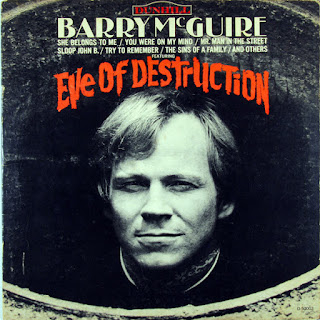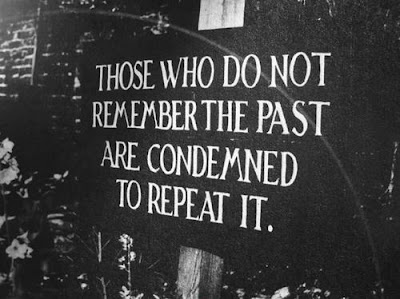And now that you don’t need him
Well, he can have his freedom
In the course of writing this blog, I’ve discovered dozens of great records that weren’t new, but were new to me.
Then there are the rediscoveries – great records that were on my radar at one time, but that I had somehow forgotten about until I stumbled across them many years later.
“Let Him Run Wild” is a rediscovery rather than a discovery. (Not that it really matters.)
* * * * *
Back in November, we celebrated the 13th anniversary of this wildly popular little blog by presenting an interview of 2 or 3 lines conducted by none other than 2 or 3 lines.
In that interview, I said that the records that would be featured on the blog in the upcoming year would be chosen from my 474-item list of worthy records that I’ve heard on various Sirius/XM channels (especially the “Underground Garage” channel) while driving in my car in the last year or so.
 |
| The best “Underground Garage” DJ ever! |
If I did choose records exclusively from that list – other than the ones I’ll pick for induction into the various 2 or 3 lines halls of fame – that means I could winnow it down by 100 or so records a year.
But it looks like that ain’t gonna happen.
* * * * *
My best laid schemes for 2 or 3 lines often gang aft agley, but my plan to feature only records that are on the list of 474 has ganged even aft agley-er than is usual.
The first few posts of the 13th year of 2 or 3 lines went according to plan. I featured records like Andy Pratt’s “Avenging Annie,” Laura Branigan’s “Gloria,” and Adriano Celentano’s “Prisencolinensinainciusol” – all discovered (or rediscovered) while listening to Sirius/XM.
But then the 2 or 3 lines train jumped the track (as it is wont to do).
While the Ad Libs’ “The Boy from New York City” was selected from my Sirius/XM list, the following post featured the Beach Boys’ “The Girl from New York City” – a record which was not on the list.
That Beach Boys song spurred my recollection of the group’s cover of “Long Tall Texan” – another record that wasn’t on the list.
 |
The good news is that “The Girl from New York City” also led me to today’s featured song – both were released on the same 1965 album, Summer Days (And Summer Nights!!).
I bought that album when I was 13 and played it almost to death. But I hadn’t heard “Let Him Run Wild” for years – or decades – until I recently rediscovered it.
* * * * *
Summer Days (And Summer Nights!!) had its ups and downs, but the ups definitely outnumbered the downs.
The album includes a cover of the Crystals’ “Then He Kissed Me,” a funny (not really) Brian Wilson song about his nightmare of a father (“I’m Bugged at My Ol’ Man”), a throwaway instrumental track (“Summer Means New Love”), and an odd little one-minute-long a cappella song fragment called “And Your Dream Comes True” that closes out side two of Summer Days (And Summer Nights!!).
The album also includes “The Girl from New York City,” “Amusement Parks U.S.A.,” “Salt Lake City,” and “You’re So Good to Me,” which are pleasant but forgettable album-fillers. (Any of them would have made a serviceable “B” side.)
While “Help Me, Rhonda” deserved to be the huge hit that it was, it doesn’t really advance the ball in terms of Brian Wilson’s musical development. It looks backward to traditional Beach Boys hit singles like “Fun, Fun, Fun” and “I Get Around” rather than breaking new musical ground.
However, the remaining tracks on Summer Days (And Summer Nights!!) most definitely do break new ground.
At first glance, “Girl Don’t Tell Me” is a just another song about a short-lived summer romance between a couple of teenagers. But it has a much more bitter tone than most summer-romance songs – and most contemporary Brian Wilson songs. Oddly, Wilson wrote it while he was honeymooning with his first wife, Marilyn Rovell, who was not quite 17 years old when they were married.
 |
| Brian and Marilyn Wilson |
“California Girls” has one foot in the Beach Boys’ past and one foot in their future. But while the babes-on-the-beach-in-bikinis lyrics didn’t break the traditional Beach Boys mold, the music certainly did.
But the most forward-looking song on Summer Days (And Summer Nights!!) was the B-side of the “California Girls” single, “Let Him Run Wild.”
* * * * *
“Let Him Run Wild” is a stunning record. It was good enough to be on Pet Sounds, which is the ne plus ultra of pop music albums. It’s not quite in the same league as “God Only Knows” and “Caroline, No” but I think it holds its own against anything else on that album.
The song’s verses are built on a minor-seventh chord progression – which is just dissonant enough to temper the sweetness of the vocals.
Things change dramatically as the verse transitions to the chorus – the minor-seventh chords become major chords, and the vocals suddenly become loud and aggressive.
I get chills every time I hear that first chorus blow the song wide open. I know what’s coming as the verse comes to an end – after all, I’ve heard the record many, many times – but that chorus still grabs me by the throat.
* * * * *
“California Girls” is Brian Wilson’s favorite Beach Boys record. He once said that the song’s intro is the greatest piece of music he ever wrote.
Wilson named “Let Him Run Wild” (which was the “California Girls” B-side) as his least favorite Beach Boys record. He didn’t like his high-pitched vocals – “I sounded like a little girl,” he complained (sounding somewhat like a little girl).
 |
But Brian’s brother Carl Wilson appreciated just how remarkable Brian’s writing on “Let Him Run Wild” was:
It was around [Summer Days (And Summer Nights!!)] that it became very evident to me that Brian was evolving very rapidly on many different levels. His music was gaining a great depth . . . somehow, there were a lot of levels going on at the same time. If one song offered a big clue that he was taking pop music to a new level, it was “Let Him Run Wild.” I remember first hearing the track; in the verse, there are so many different parts and themes and lines. The chord progression was very advanced, very different than the three or four chord structure that had been so much a part of pop music songwriting until then.
* * * * *
Dennis Wilson wasn’t speaking about “Let Him Run Wild” in particular when he wrote the following words, but they apply to that song as much as they do to any song Brian Wilson created:
We would be in the studio, and he’d play us a song, and we’d start singing and crying. It was so great. It was so beautiful. It was like, “How could this be happening?” We’d say, “How’d you write that?” There wasn’t one person in the group who could come close to Brian’s talent.
Dennis actually underestimates Brian’s talent. In fact, there wasn’t one person in the world who could come close to Brian’s talent.
* * * * *
Click here to listen to “Let Him Run Wild.”
Click on the link below to buy the record from Amazon:






















